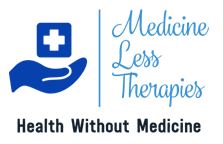Masso Therapy:
Massage is an excellent form of passive exercise. The word is derived from the Greek word ‘massier’ which means to kneed, from French “friction of kneading”, or from Arabic massa meaning “to touch, feel or handle” or from Latin massa meaning “mass, dough”.
- Massage is the practice of soft tissue manipulation with physical (anatomical), functional (physiological), and in some cases psychological purposes and goals. If correctly done on a bare body, it can be highly stimulating and invigorating.
- Massage is also a modality of Naturopathy and quite essential for maintaining good health. Massage involves acting on and manipulating the body with pressure – structured, unstructured, stationary, or moving – tension, motion, or vibration, done manually or with mechanical aids.
- Target tissues may include muscles, tendons, ligaments, skin, joints, or other connective tissue, as well as lymphatic vessels. Massage can be applied with the hands, fingers, elbows, knees, forearm, and feet.
- There are over eighty different recognized massage modalities. It aims at improving blood circulation and strengthening bodily organs.
- Various oils are used as lubricants like mustard oil, sesame oil, coconut oil, olive oil, aroma oils etc. which also have therapeutic effects.
- There are seven fundamental modes of manipulation in massage and these are: Touch, effleurage (stroking), friction (rubbing), petrissage (kneading), tapotement (percussion), vibration (shaking or trembling) and Joint movement. Movements vary according to disease condition and parts applied.
- Another form of massage helpful in most ailments are the vibratory massage, Powder massage, Water massage, Dry massage. Powders of neem leaves, rose petals and are also used as lubricants for massage.

Physiological Effects of Massage
Reflex Effects (responses mediated by the nervous system)
- Vasodilation of arteries
- Stimulation of peristalsis (aids in digestion)
- Increase or decrease in muscle tone
- Increases activity of the organs in the abdominal cavity
- Triggers the relaxation response
- Soothing or stimulating effect on muscles
- Stimulates the heart, increases strength and rate of contraction
- Increases efficiency of the immune system
Mechanical Effects (responses resulting from directly applied manual pressure)
- Increased venous return
- Increased lymphatic flow, Lymphatic drainage
- Circulatory efficiency
- Loosening of mucous (respiratory system)
- Breakdown of fibrosis/adhesions
- Stretch to shortened muscles/loosens muscle fibres
- Increased muscle temperature
- Increased metabolic rate locally and gaseous exchange
- Stretches scar tissue
- Decreased muscle tone/increased muscle tone
- Increased range of Motion
- Restoration of proper joint mechanics/biomechanics
- Elimination of muscle imbalances
- Strengthen weakened muscles
Benefits of massage
- The general massage, dealing with all parts of the body, is highly beneficial in many ways.
- It tones up the nervous system, influences respiration and quickens the elimination of poisons and waste material from the body through the various eliminative organs such as the lungs, skin, kidneys and bowels.
- It also boosts blood circulation and metabolic processes. A massage removes facial wrinkles, helps to fill out hollow cheeks and neck and eases stiffness, sore muscles and numbness.
- Peer-reviewed medical research has shown that the benefits of massage include pain relief, reduced trait anxiety and depression, and temporarily reduced blood pressure, heart rate, and state anxiety.
- Theories behind what massage might do include blocking nociception (gate control theory), activating the parasympathetic nervous system which may stimulate the release of endorphins and serotonin, preventing fibrosis or scar tissue, increasing the flow of lymph, and improving sleep but such effects are yet to be supported by well designed clinical studies.
